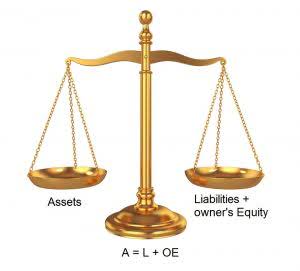
For this example, the analysis will be carried out on the data reported for 2021. However, you can do this quickly for multiple years, particularly if you use a balance sheet template. Since the total will be the same for all line items in this section, use absolute referencing ($) for the total. Let’s continue our analysis of ABC Manufacturing by applying vertical analysis to its balance sheet.

How Does a Vertical Analysis Income Statement Differ From a Horizontal Statement?

If you already use templates for your financial statements, it’s easy to include the formulas for vertical analysis by adding columns or a new section. You can analyze financial statements using multiple methods, including horizontal and vertical analysis. Horizontal analysis studies changes to variables over time, using historical data to predict future trends. Vertical analysis, however, studies the proportions of the total amount represented by the different variables during a single period. Vertical analysis allows you to benchmark a company’s financial performance against industry averages or leading competitors. By comparing the percentages of line items, you can identify areas of strength or weakness and gain insights into competitive positioning.

Courses on Finance Category
- However, like horizontal analysis, this type of analysis also provides limited information.
- Vertical analysis, when combined with other analytical methods, empowers you to make informed decisions, evaluate financial performance, and drive business success.
- For example, comparing current expenses to previous years as a proportion of revenue is far more useful than looking just at the raw numbers.
- However, when reviewed against the overall revenue of the business, this line item has actually gone down slightly.
This change could be driven by higher expenses in the production process, or it could represent lower prices. We can’t know for sure without hearing from the company’s management, but with this vertical analysis we can clearly and quickly see that ABC Company’s cost of goods sold and gross profits are a big issue. In accounting, a vertical analysis is used to show the relative sizes of the different accounts on a financial statement.
Other Articles on Finance
- For each account on the income statement, we divide the given number by the company’s sales for that year.
- Horizontal analysis studies changes to variables over time, using historical data to predict future trends.
- For example, on the income statement if the base chosen is revenue, then each line item would be shown as a percentage of revenue.
- In this guide, we will explore the concept of vertical analysis, its purpose, and why it is crucial in financial analysis.
When you apply vertical analysis to an income statement, it lays out a straightforward and transparent picture of a company’s spending patterns. This clarity facilitates discussions and strategic evaluations of that expenditure. The vertical analysis of financial statements can be done more comfortably using spreadsheet software like Excel or Google Sheets. Using Layer, assets = liabilities + equity you can also control data flows, update calculations, and share the results automatically. Another powerful application of a vertical analysis is to compare two or more companies of different sizes.
Using Vertical Analysis for Benchmarking and Industry Comparisons
We can easily understand that vertical analysis formula the total expenses gradually increased from 43% to 52%, and the net income get reduced from 1st year to 2nd year. In the 3rd year, the COGS decreased compared to the previous years, and the income increased. Managers add an extra column to show each line item as a percentage of the top-line item. Analysts prepare percentage terms for each line item in all major financial statements. The financial statements created with vertical analysis are termed common-size financial statements.
- Vertical analysis looks at the contributing percentage of each line item to the total base figure.
- Vertical analysis indicates the relative importance of each line item in a certain period.
- Then, you can simply take both figures and use them in the formula given above to find the relationship between both.
- IT and software costs have increased on a dollar basis, which could initially cause some concern for FP&A executives looking to cut costs.
- Vertical analysis presents data in a single time period by expressing each line item as a percentage of the base item.
- Hence, it determines the relative importance of various elements in financial statements and to find trends and patterns (further use to make financial decisions).
Vertical Analysis Vs Horizontal Analysis
The above vertical analysis example shows the company’s net profit where we can see the net profit in both amount and percentage. The income statement can be compared with previous years, and the net income can be compared where it helps to compare and understand the percentage of rising or loss of income. It thus becomes easier to compare https://www.bookstime.com/ the profitability of a company with its peers. However, the vertical analysis provides a clearer understanding of the static figures in all types of financial statements.

In this type of analysis, each line item is represented as a percentage of another item. Usually, a baseline item is selected and all other items are reported in percentage terms of that item. It is calculated by adding a column in the financial statement and the results are shown in percentage terms. It offers valuable information to internal and external stakeholders and can be used in different situations. In this FAQ we will discuss what vertical analysis is, how it relates to horizontal analysis, and provide a simple example of how to apply it.















